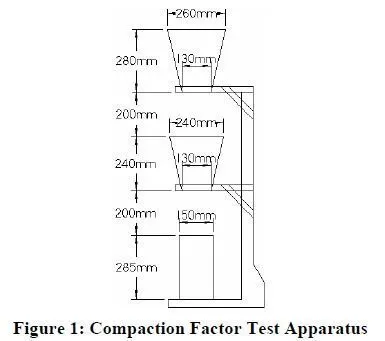The soil triaxial test (Ritchie 1962; Powers 1968) can be used to measure the resistance of concrete to shear stress. The test is conducted with the same apparatus and with the same procedure as the triaxial test commonly used for soils. The results of the triaxial test are plotted on a Mohr diagram, which relates shear stress to normal stress. Based on the Mohr diagram, the Mohr envelope can be constructed in order to determine the maximum shear stress and corresponding normal stress at failure and the angle of internal friction. The test has been conducted on concrete mixtures with slumps ranging from 2 to 5 inches.
Advantages:
Like the direct shear test, the triaxial test provides additional information about concrete.
The test can be used for low slump concretes.
Disadvantages:
The test does not measure workability in terms of shear stress and shear rate. The additional information provided by the test is not necessarily useful.
The test is expensive and not appropriate for field use.
